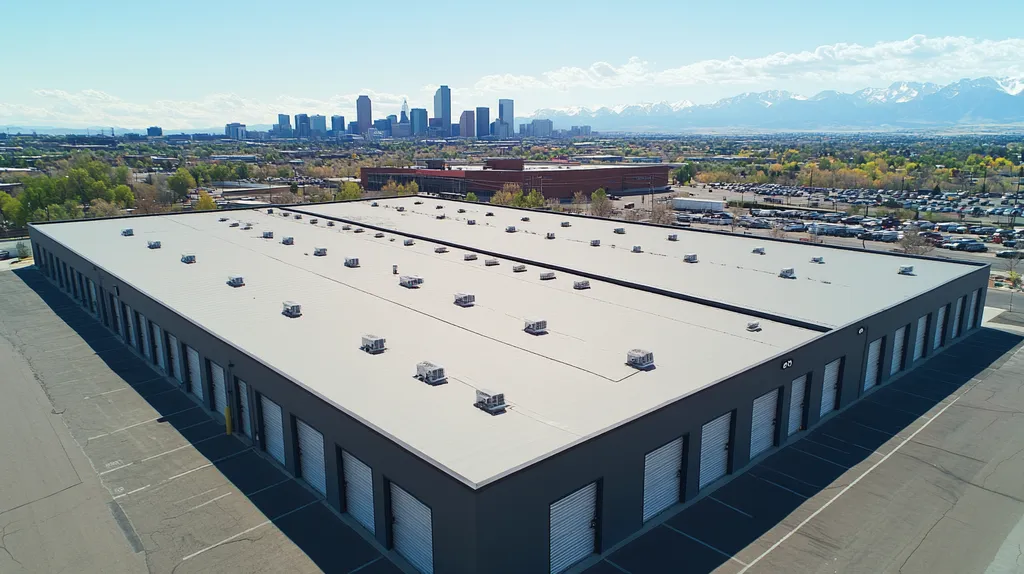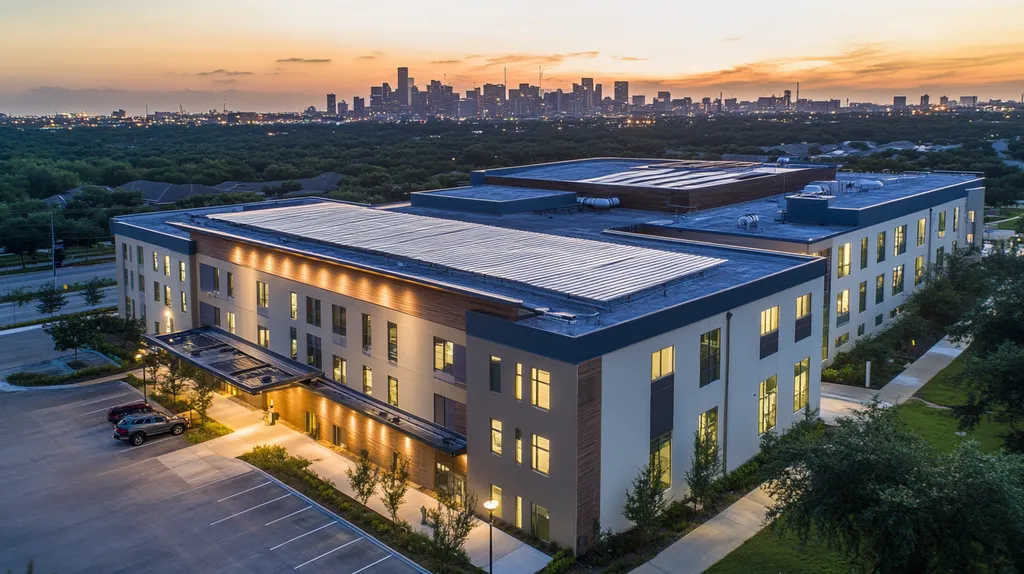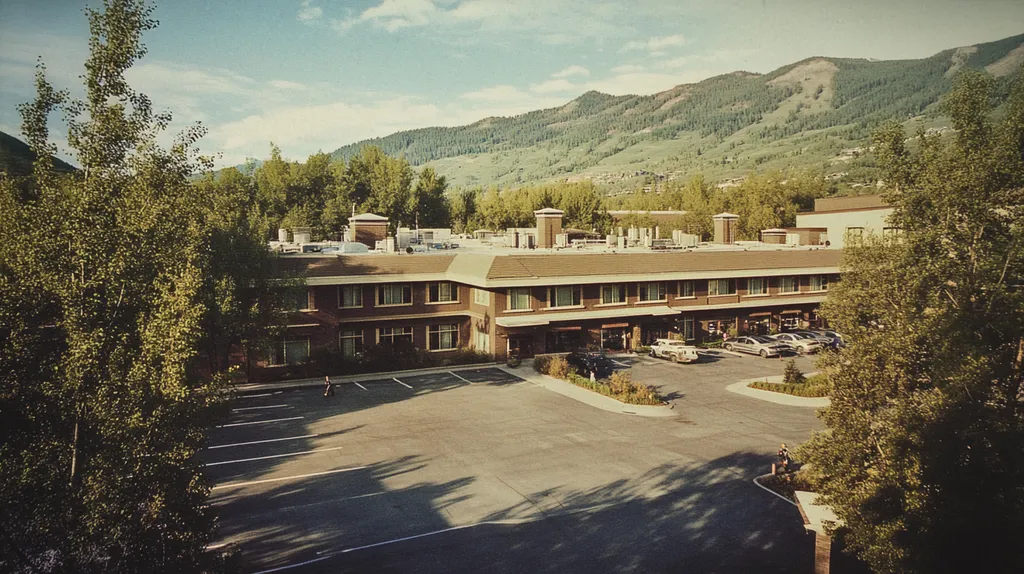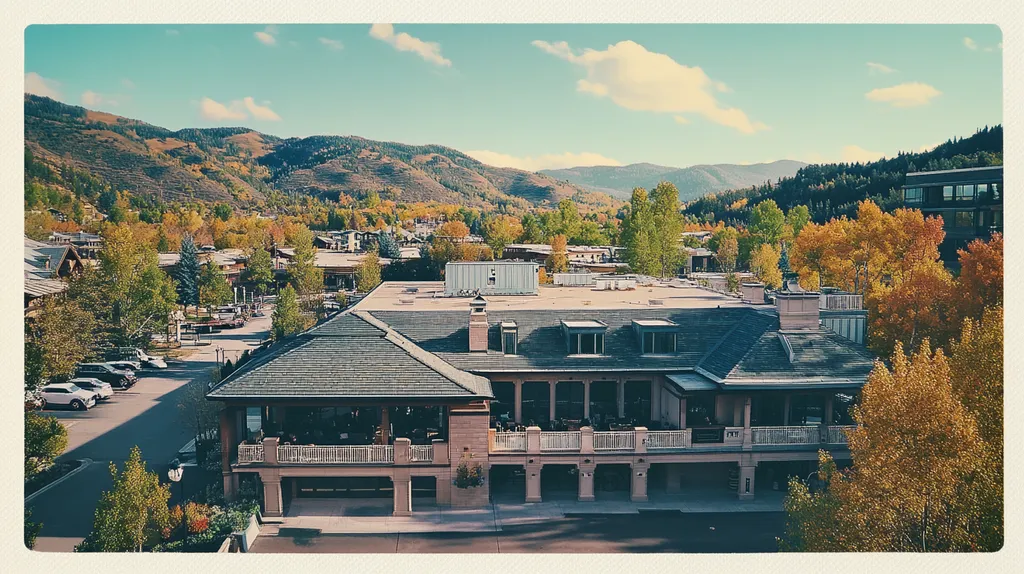Nearly 40% of industrial roofs develop serious issues within the first year after installation due to inadequate post-installation inspections. These preventable problems cost facility managers millions in repairs and operational disruptions annually.
A systematic approach to post-installation inspections serves as the foundation for maintaining roof integrity and protecting valuable assets. From performance evaluation to compliance requirements, each inspection element plays a vital role in extending roof lifespan.
This comprehensive guide provides facility managers with actionable solutions for conducting thorough post-installation inspections, ensuring regulatory compliance, and implementing effective maintenance strategies that safeguard their roofing investments.
SECTION 1: PERFORMANCE FACTORS
After installing an industrial roof, it’s imperative to conduct immediate and comprehensive inspections to ensure its longevity and resilience. Research shows that 30% of industrial roofs may fail within the first decade if installation issues are not promptly addressed. To mitigate the risk of costly repairs and operational downtime, property owners and facility managers must pay close attention to key areas such as surface conditions, drainage efficiency, and membrane integrity.
Surface Condition Assessment
The initial focus should be the surface of the roofing material. Visible damage like punctures or tears can compromise the roof’s structural integrity. Depending on the type of roofing material, even minor defects might provide avenues for water intrusion, which can lead to mold and material degradation.
It’s important to also check for any debris accumulation on the roof. Heavy debris can create hotspots, increasing the risk of wear or leaks. Conducting regular visual inspections allows for the early detection of issues, thereby saving both time and money in the long run.
Furthermore, verifying proper adhesion is crucial. If the roofing membrane is inadequately secured, it may loosen and permit moisture to enter. Regular surface assessments enable timely repairs, ensuring the roof maintains optimal performance.
Key Action Items
Drainage System Efficiency
Effective drainage is vital for industrial roofs, as pooling water can significantly shorten the roof’s life. Facility managers should routinely inspect gutters, downspouts, and drains to ensure they are clear of blockages. Clogged systems can lead to dangerous water accumulation, which places additional stress on the roofing structure.
It’s also crucial to understand the slope of the roof. Insufficient slope can lead to stagnant water, increasing the likelihood of leaks and structural harm. Evaluating the drainage design during inspections helps identify flaws that can be resolved early on.
Frequent evaluations of the drainage system contribute to the roof’s long-term performance, reducing the risk of failure and promoting sustainability while safeguarding the building and its contents.
Key Action Items
Membrane Integrity Check
The condition of the roofing membrane is essential for its overall functionality. Regular inspections should focus on identifying blisters, seams, and punctures, as these factors directly affect the roof’s resilience against extreme weather conditions.
Particularly important are the seams, which are commonly the weakest points in any membrane. A compromised seam can invite water intrusion, leading to serious damage. Maintaining membrane integrity through careful checks helps extend the lifespan of the roofing system.
These inspections also play a key role in upholding warranties, which often requires documentation of regular maintenance. By adhering to these guidelines, facility managers protect their assets and ensure the roof performs effectively.
Key Action Items
SECTION 2: FINANCIAL CONSIDERATIONS
Understanding the financial implications of industrial roof inspections is crucial for facility managers. Without proper budgeting for maintenance, facility managers risk incurring exorbitant repair costs or facing the need for a complete roof replacement. Oversights can lead to significant financial losses due to water damage or structural problems, underlining the importance of thoughtful financial planning.
Cost of Maintenance vs. Repair
Routine maintenance often proves to be far less expensive than dealing with repairs. For example, a small leak identified during an inspection could cost only a few hundred dollars to fix. Conversely, ignoring that leak might result in extensive water damage, leading to thousands of dollars in repairs and lost operational time.
A proactive approach not only saves money but also extends the roof’s lifespan. Regular inspections can uncover signs of wear and tear, enabling timely minor repairs that prevent the need for premature roof replacement, which can be a significant financial burden.
Investing in maintenance can lead to substantial savings; data indicates that facilities practicing regular maintenance can save up to 15% on overall roofing costs. By establishing a routine for inspections and repairs, organizations enhance both financial efficiency and structural integrity.
Key Action Items
Budgeting for Inspections and Repairs
Establishing a budget for inspections is essential for effective financial management of industrial roofing. Facility managers should anticipate costs tied to both regular inspections and potential repairs throughout the year. Not including these expenses can create financial strain when unplanned issues develop.
A solid budgeting strategy involves reserving a percentage of the roof’s original installation cost annually. This fund can act as a financial cushion for emergency repairs or urgent inspections. Setting aside 1-2% each year can minimize financial disruption when unexpected costs arise.
Additionally, the frequency of inspections should be woven into the budget, as specific roof types and environmental factors may necessitate more frequent checks. Incorporating these considerations fosters a comprehensive financial plan for roofing maintenance.
Key Action Items
Warranty and Insurance Implications
The installation of an industrial roof typically includes warranties that significantly affect financial decisions. Most warranties mandate regular inspections to remain in effect. Skipping these inspections can void warranties, resulting in potential out-of-pocket expenses for significant repairs.
Insurance considerations also play a vital role. Regular roof inspections can often lead to lower insurance premiums and provide necessary documentation to defend against liability claims. Facilities with well-maintained roofs are less likely to encounter insurance issues from leaks or structural failures.
Understanding warranty specifics and financial implications tied to potential neglect is crucial. Each warranty has unique requirements, and being informed facilitates better financial decision-making.
Investing time and resources in understanding warranty and insurance implications ensures long-term financial health. By adhering to warranty conditions through regular inspections, facilities can avoid unnecessary expenses and safeguard their investments.
Key Action Items
SECTION 3: COMPLIANCE REQUIREMENTS
After an industrial roof installation, ensuring compliance is not merely an option—it’s an essential responsibility. Adhering to regulatory standards not only helps maintain safety and functionality but also avoids significant financial penalties or even unsafe conditions. Non-compliance can lead to increased repair costs or, in the worst case, structural failures.
Regulatory Standards and Codes
Every industrial roofing project must align with local, state, and federal regulations. These codes are designed to guarantee the safety, durability, and sustainability of roofing systems. For example, the International Building Code (IBC) significantly influences installation practices by addressing crucial aspects like structural integrity and fire safety.
Securing the necessary permits is equally vital. Facilities operating without proper permits face risks of fines and enforcement actions that might disrupt operations. Regulatory requirements can vary greatly by location, making it crucial for facility managers to engage local authorities for accurate guidelines.
Moreover, compliance with Occupational Safety and Health Administration (OSHA) standards is essential for safeguarding workers involved in roofing installation. Adhering to these regulations protects the workforce and secures the investment made in the roofing system.
Key Action Items
Industry-Specific Guidelines
Various industries have unique roofing requirements, necessitating adherence to specific guidelines. For instance, food processing facilities require roofs that are not only durable but also easy to clean and pest-resistant. Meeting these standards is crucial to avoiding health code violations.
In addition, the National Roofing Contractors Association (NRCA) sets forth guidelines that define best practices for diverse roofing systems, such as single-ply, built-up, or metal roofs. Following these recommendations greatly enhances roof performance and longevity.
Facility managers should collaborate closely with manufacturers to ensure selected materials align with industry guidelines. This proactive approach minimizes risks and fosters a sustainable roofing environment tailored to the specific needs of the industry.
Key Action Items
Documentation and Reporting
Thorough documentation serves as the backbone for proving compliance and ensuring operational integrity. It is vital to maintain accurate records of inspections, repairs, and any changes made to the roofing system. These documents act as essential evidence in case of regulatory audits or disputes.
Consistent reporting on roof condition and maintenance activities can help uncover underlying issues before they escalate into larger problems. For instance, tracking the frequency of leaks or damages can inform future decisions and optimize budget allocation for necessary repairs.
Facility managers may want to adopt a digital management system to simplify documentation and ensure compliance checks remain efficient. This approach not only streamlines record-keeping but also aids in compliance audits, making all necessary documents easily accessible.
Key Action Items
SECTION 4: RISK MANAGEMENT
Effective risk management becomes essential after the installation of an industrial roof. Even a minor oversight can lead to significant damage and costly repairs. Research shows that moisture-related issues can affect as much as 30% of industrial roofs within five years of installation. By identifying potential hazards and addressing environmental challenges, facility managers can protect their assets and extend the life of the roof. This section highlights critical focus areas for minimizing risks.
Identifying Potential Hazards
The process of identifying potential hazards should commence immediately after installation. Common issues include poor drainage and manufacturing defects. A visual inspection can reveal improperly sealed seams that might lead to leaks.
Addressing these concerns quickly prevents minor issues from worsening. Facility managers should give priority to inspections in areas especially vulnerable to extreme weather. Consistent monitoring can also uncover new hazards over time, such as wildlife infiltration.
To enhance identification efforts, leveraging technology can be beneficial. Tools like drones and thermal imaging offer insights into concealed weaknesses that might go unnoticed. This proactive strategy significantly lowers the risk of future damage.
Key Action Items
Assessing Environmental Risks
Environmental risk assessment is vital for robust risk management. Factors such as local weather patterns and geographic conditions can significantly impact roof durability. For instance, industrial roofs located in hurricane-prone areas may need additional structural reinforcements.
Regular assessments allow facility managers to adapt and incorporate necessary modifications. Climate change introduces new environmental risks, so utilizing up-to-date weather data is imperative. A thorough risk review accounts for exposure to wind, sun, and precipitation.
Understanding the impact of surroundings is crucial as well. Nearby trees or buildings can add undue stress to the roof. Identifying such risks early facilitates timely adjustments, reducing the likelihood of catastrophic failures.
Key Action Items
Mitigating Water Damage
Water damage represents one of the most significant threats to industrial roofs. Ensuring optimal functionality of roof drainage systems is critical. Problems like clogged drains or inadequate sloping can lead to water pooling, raising the risk of leaks.
Regular inspections should concentrate on identifying indications of water accumulation. Early signs such as mold and mildew growth often point to underlying moisture issues. Addressing these indicators promptly can decrease the likelihood of severe water damage.
Additionally, a proactive maintenance plan is essential for mitigating water damage. This plan should encompass regular cleaning of gutters and drainage systems. Choosing durable, moisture-resistant roofing materials further supports minimizing water-related risks.
Key Action Items
SECTION 5: OPERATIONAL PROCEDURES
Conducting inspections after industrial roof installations is essential for maintaining safety and performance. Failing to address inspection needs can lead to significant problems, including costly water damage, compromised structural integrity, and disruptions to operations. This section details crucial operational procedures that will guide facility managers through the pre-inspection preparation, the inspection process itself, and post-inspection reporting. Implementing these steps ensures that roofs remain in optimal condition.
Pre-Inspection Preparation
Effective preparation is pivotal for a smooth roofing inspection process. Before setting foot on the roof, facility managers should gather essential documentation, including installation blueprints and manufacturer specifications. This foundational information helps pinpoint high-risk areas that need closer attention during the inspection.
Forming an expert inspection team is also vital. Each team member should be well-versed in the specific roofing materials used and aware of common vulnerability points. Scheduling inspections during favorable weather conditions not only enhances the robustness of the evaluation but also minimizes the risk of encountering complications.
Additionally, ensuring communication with all stakeholders keeps everyone informed about the inspection plans, helping to limit disruptions and maintain safety. By preparing thoroughly, facility managers set the stage for effective inspections.
Key Action Items
Conducting the Roof Inspection
Once on-site, a methodical approach is critical for comprehensively assessing the roofing system. Begin by inspecting the roof surface for visible signs of damage including cracks, punctures, and deterioration of flashing or seams. These areas tend to be common trouble spots.
Utilizing advanced tools, such as infrared cameras, can significantly enhance the inspection process by revealing moisture penetration and thermal anomalies that may be hidden to the naked eye. Attention should also be paid to the drainage system, confirming that gutters and downspouts are functioning properly to direct water away from the building.
Timely documentation of findings is crucial for effective post-inspection reporting. Employing checklists can facilitate this process, ensuring every aspect of the roofing system is thoroughly examined. Collaboration among inspection team members during this process promotes comprehensive insights and thorough evaluations.
Key Action Items
Post-Inspection Reporting and Action
Upon concluding the inspection, it’s critical to compile findings into a clear and structured report. This document should address strengths and weaknesses within the roofing system, spotlighting areas requiring immediate attention and suggesting maintenance strategies. Including visuals, such as photographs or diagrams, enhances the report’s clarity and impact.
Establishing a timeline for necessary repairs enhances accountability and ensures timely resolution of identified issues. Assigning specific responsibilities to team members aids in addressing the matters effectively. Follow-up inspections should also be scheduled to confirm that repairs are performed satisfactorily.
Sharing the final report with relevant stakeholders promotes transparency and teamwork while laying the groundwork for ongoing maintenance strategies built on inspection findings. This proactive approach to post-inspection actions is critical for fostering the long-term success of the roofing system.
Key Action Items
SECTION 5: OPERATIONAL PROCEDURES
Conducting inspections after industrial roof installations is crucial for ensuring long-lasting performance and safety. Neglecting these inspections can lead to severe consequences, including costly damages and potential safety hazards. For instance, a single overlooked leak can cause extensive water damage, impacting both operations and financial health. This section outlines essential operational procedures for effective pre-inspection preparation, conducting thorough inspections, and managing post-inspection reporting. By following these steps, facility managers can guarantee the integrity of their roofing systems.
Pre-Inspection Preparation
Effective preparation is key to a successful roofing inspection. Before setting foot on the roof, facility managers should collect all relevant documentation, including installation blueprints and manufacturer specifications. This foundational information highlights critical areas that require special attention during the inspection.
Assembling an inspection team with the right expertise is also essential. Each team member should understand specific roofing materials and potential failure points to conduct a thorough evaluation. Scheduling inspections during favorable weather conditions minimizes complications and enhances accuracy.
Clear communication with all stakeholders is vital for a seamless inspection process. Informing tenants or employees about the inspection schedule helps reduce disturbances and ensures safety during the evaluation. By thoroughly preparing, facility managers lay the groundwork for effective inspections.
Key Action Items
Conducting the Roof Inspection
During the inspection, a systematic approach is vital for a comprehensive assessment of the roofing system. Start by examining the roof surface for visible signs of damage, such as cracks, punctures, and issues with flashing or seams, as these are common points of failure.
Utilizing advanced tools, such as infrared cameras, can significantly enhance the inspection process by detecting moisture penetration and thermal anomalies that may be hidden. Additionally, evaluate the drainage system to confirm that gutters and downspouts are effectively directing water away from the building.
Timely documentation of findings is critical for effective post-inspection reporting. Employing checklists can facilitate this process, ensuring no aspect of the roofing system is overlooked. Collaboration among team members during this process promotes thorough evaluations and shared insights.
Key Action Items
Post-Inspection Reporting and Action
After completing the inspection, compiling findings into a clear and structured report is essential. This document should address both strengths and weaknesses within the roofing system, spotlighting areas requiring immediate attention and providing maintenance recommendations. Including visuals, such as photographs or diagrams, enhances the report’s clarity and impact.
Establishing a timeline for necessary repairs enhances accountability and ensures timely resolution of identified issues. Assigning specific responsibilities to team members helps address matters effectively. Additionally, facility managers should schedule follow-up inspections to verify that repairs are performed satisfactorily.
Sharing the final report with relevant stakeholders promotes transparency and collaboration. Ongoing maintenance strategies should be developed based on inspection findings to help prevent future issues. This proactive approach ensures the long-term success of the roofing system.
Key Action Items
The Bottom Line
With 40% of industrial roofs developing serious issues within their first year due to inadequate post-installation inspections, the stakes for proper evaluation could not be higher.
A systematic approach to inspections serves as the cornerstone of roof longevity, potentially extending service life by 5-10 years while reducing repair costs by up to 25%.
From performance evaluation and financial planning to compliance requirements and risk management, each element of the inspection process plays a vital role in protecting these substantial investments.
By implementing comprehensive inspection protocols and maintaining detailed documentation, facility managers can significantly reduce the risk of premature roof failure while ensuring regulatory compliance and optimal performance throughout the roof’s lifecycle.
The future of industrial roofing depends on diligent oversight, making post-installation inspections not just a recommendation, but an essential business practice.
FREQUENTLY ASKED QUESTIONS
Q. What should I assess in surface conditions of a commercial roof?
A. Focus on visible damage like punctures and tears, along with debris accumulation. Regular assessments allow for early detection of problems, preventing costly repairs and extending the roof’s lifespan.
Q. How do financial implications affect industrial roof maintenance?
A. Proper budgeting for inspections and maintenance can prevent costly repairs later. Regular maintenance is generally cheaper than dealing with extensive repairs, safeguarding both finances and structural integrity of the roof.
Q. What are the compliance requirements for an industrial roof?
A. Compliance with local, state, and federal regulations is crucial to ensure safety and functionality. This includes obtaining necessary permits and adhering to standards set by organizations such as OSHA and the International Building Code.
Q. How can I identify hazards in my commercial roof?
A. Begin by visually inspecting for drainage issues or manufacturing defects right after installation. Utilizing technology like drones can help reveal hidden issues, enabling more effective management of potential hazards.
Q. What operational procedures are critical for roof inspections?
A. Prior to inspection, gather documentation and assemble a skilled team. Conduct thorough on-site inspections, followed by comprehensive post-inspection reporting, to ensure all issues are addressed promptly and effectively.
Q. How can weather patterns impact my industrial roof?
A. Local weather patterns can significantly affect roof durability. Understanding these conditions enables facility managers to make necessary modifications to reinforce roof structures against potential damage from extreme weather.
Q. What are common maintenance tasks for commercial roofs?
A. Regular tasks include inspecting seams for weaknesses, clearing drains, and cleaning gutters. Maintaining these aspects helps ensure roof integrity, prolongs lifespan, and mitigates the risk of costly repairs due to neglect.











